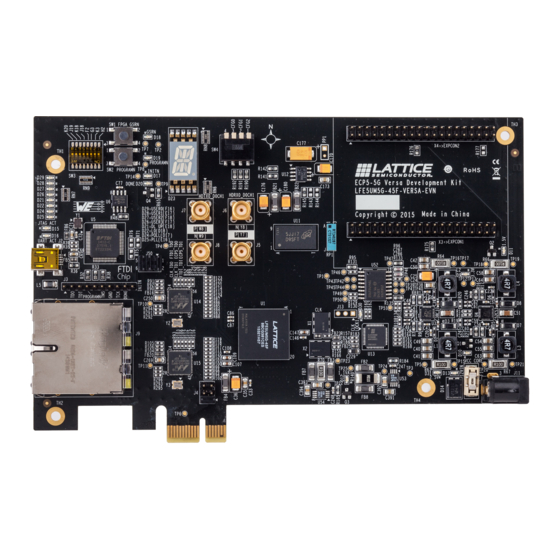
Lattice Semiconductor ECP5-5G Manuals
Manuals and User Guides for Lattice Semiconductor ECP5-5G. We have 4 Lattice Semiconductor ECP5-5G manuals available for free PDF download: Technical Note, Technical Notes, Usage Manual, User Manual
Lattice Semiconductor ECP5-5G Technical Note (86 pages)
High-Speed I/O Interface
Brand: Lattice Semiconductor
|
Category: Recording Equipment
|
Size: 3.15 MB
Table of Contents
Advertisement
Lattice Semiconductor ECP5-5G Technical Notes (78 pages)
High-Speed I/O Interface
Brand: Lattice Semiconductor
|
Category: Recording Equipment
|
Size: 8.59 MB
Table of Contents
Lattice Semiconductor ECP5-5G User Manual (33 pages)
Brand: Lattice Semiconductor
|
Category: Motherboard
|
Size: 3.41 MB
Table of Contents
Advertisement
Lattice Semiconductor ECP5-5G Usage Manual (43 pages)
Brand: Lattice Semiconductor
|
Category: Computer Hardware
|
Size: 4.95 MB
Table of Contents
Advertisement
Related Products
- Lattice Semiconductor EVDK
- Lattice Semiconductor ECP5 Versa
- Lattice Semiconductor ASC Bridge Board
- Lattice Semiconductor CrossLink LIF-MD6000
- Lattice Semiconductor HDMI-VIP-IB-EVN
- Lattice Semiconductor Himax HM01B0
- Lattice Semiconductor iCE40 UltraLite
- Lattice Semiconductor iCE40 UltraPlus
- Lattice Semiconductor iCE40 UltraPlus Series
- Lattice Semiconductor iCE40HX-8K


